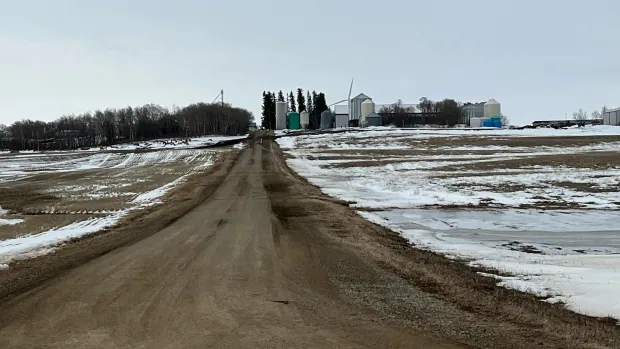The threat of flooding looms after weeks of spring storms, but the moisture is much-needed on farms on the Prairies.

Steve Donald has one word to sum up the current condition of his southeast Saskatchewan farmyard:
“Muck.”
The 42-year-old grain and cattle farmer near Moosomin, Sask. — just over 200 kilometres east of Regina — says repeated spring snowstorms have delayed seeding on his land. But he’s optimistic the extra moisture will provide adequate feed and water for his cattle, and better growing conditions.
“We had no subsoil moisture at all going into freeze-up,” said Donald. “Now with the amount of snow we had all winter, plus what we’re getting now … this is perfect.”
He’s now hoping the weather will dry out and warm up, which would make calving much easier.

Trevor Hadwen, an agriclimate specialist with Agriculture and Agri-Food Canada, says the drought has migrated over Western Canada over the past five years or so, with Manitoba and Saskatchewan experiencing the worst of it last summer.
This year, he says, the contrast in Saskatchewan is noticeable.
“The province seems to be split in half, with the eastern areas doing a lot better than last year and the western parts still struggling from the drought,” he said. “These last few storms really have changed the outlook for … the southeast.”
Agriculture and Agri-Food Canada’s drought monitor shows much of the eastern half of the province to be in “moderate drought” — or a one in five-year drought — as of March 31. Much of the western half, meanwhile, remains in “severe” to “extreme” drought — conditions only seen once in every 10 to 20 years.
“That area is going to be delayed in terms of their pasture recovery; in terms of their feed availability for cattle,” said Hadwen. “They’re going to need ongoing rain through the summer period.”
An updated version of the drought map is expected in the first week of May.
John Pomeroy, the Canada Research Chair in Water Resources and Climate Change at the University of Saskatchewan, says the drought in southeast Saskatchewan has ended.
It takes hundreds of millimetres of water to reverse drought, but it can happen, he says.
Pomeroy noted cooler conditions in the southeast might delay seeding this season, but it should help in the long run to replenish deep soil moisture lost over the last few years.
“No one’s lost a crop during a cold April,” said Pomeroy. “What moisture is there will be available in May and June when we need it.”

Not all hope is lost for the western half of the province.
Pomeroy notes “tremendous” snowpacks in the Rocky Mountains measuring two metres — with some drifts as deep as five metres — haven’t begun to melt yet.
Once they start melting in the summer, they’ll fill rivers on the Prairies, providing “sufficient” water for farmers and hydroelectric stations, said Pomeroy.
Flooding a concern as storms continue
While the moisture is welcome for some, it’s too much for others.
A Colorado low impacting parts of Manitoba this weekend could bring as much as 80 millimetres of rain. In the worst case scenario, that could cause the Red River to rise to levels above what was seen in 2009 — the worst flooding event since what was referred to as the “Flood of the Century” in 1997.
An overland flood advisory has also been issued by Saskatchewan’s Water Security Agency for areas in the southeast along the Antler River and its tributaries.
Warmer weather this weekend in Saskatchewan could cause snow to melt quickly, leading to flooding on farmland and over roadways.
The agency advised people to stay away from any waterways with fast-moving water.

